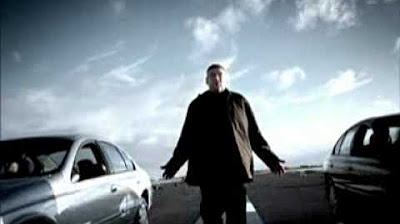PHYSICS - Calculating the Braking Distance of a Car (Exam Question Example)
Summary
TLDRIn this educational video, the presenter tackles a physics problem involving a car traveling at 90 km/h that suddenly encounters a barrier 40 meters ahead. The driver takes 0.75 seconds to react before applying brakes, decelerating at 10 m/s². The script explores whether the car will hit the barrier and calculates the maximum safe speed to avoid a collision. Through clear visualization and step-by-step calculations, the presenter finds that at the initial speed, the car will not stop in time, and determines the critical speed to be 14.26 m/s for a safe stop, emphasizing the importance of practice in mastering physics.
Takeaways
- 🚗 The scenario involves a car traveling at 90 km/h that suddenly sees a barrier 40 meters ahead.
- ⏱ The driver takes 0.75 seconds to react before applying the brakes.
- 🔢 The car's initial speed is converted to 25 m/s for consistency in units.
- 🛑 The car decelerates at a rate of 10 m/s² once the brakes are applied.
- 📐 The problem is divided into two phases: the reaction time phase and the deceleration phase.
- 🔍 The first phase (reaction time) is calculated by multiplying the initial speed by the reaction time.
- 📉 The second phase (deceleration) uses the kinematic equation to find the stopping distance.
- 🚫 The calculation shows that the car will not be able to stop in time and will hit the barrier.
- 🔄 For part B, the process is reversed to find the maximum safe speed to avoid hitting the barrier.
- 🧩 The maximum speed is found by setting up a quadratic equation based on the stopping distance and solving for the initial velocity.
- 🏁 The maximum safe speed calculated is approximately 14.26 m/s, which is less than the initial speed of 25 m/s.
Q & A
What is the initial speed of the car in meters per second?
-The initial speed of the car is 25 meters per second, which is obtained by converting 90 kilometers per hour to meters per second using the conversion factor \( \frac{1}{3.6} \).
How long does it take for the driver to react before applying the brakes?
-The driver takes 0.75 seconds to react before applying the brakes after seeing the barrier.
What is the deceleration rate of the car when the brakes are applied?
-The car decelerates at a rate of 10 meters per second squared.
How much distance does the car cover during the driver's reaction time?
-During the driver's reaction time, the car covers 18.75 meters.
What is the formula used to calculate the distance covered while decelerating?
-The formula used to calculate the distance covered while decelerating is \( v^2 = u^2 + 2as \), where \( v \) is the final velocity, \( u \) is the initial velocity, \( a \) is the acceleration, and \( s \) is the distance.
Does the car hit the barrier according to the scenario described?
-Yes, the car hits the barrier because the total distance covered during the reaction time and while decelerating exceeds the 40 meters to the barrier.
What is the maximum speed at which the car could travel and not hit the barrier, given the driver's reaction time and the deceleration rate?
-The maximum speed at which the car could travel and not hit the barrier is 14.26 meters per second.
How is the total stopping distance divided in the scenario?
-The total stopping distance is divided into two parts: the distance covered during the driver's reaction time (s1) and the distance covered while decelerating (s2).
What mathematical approach is used to solve for the maximum speed in Part B of the question?
-In Part B, a quadratic equation is set up and solved to find the maximum initial speed (x) that allows the car to stop just before the barrier.
Why is it important to visualize the scenario when solving the physics problem?
-Visualizing the scenario helps to break down the problem into manageable parts and understand the sequence of events, making it easier to apply the correct physics formulas and solve the problem accurately.
What is the significance of converting all units to standard units before solving the problem?
-Converting all units to standard units, such as meters per second for speed, ensures consistency in calculations and avoids errors due to unit mismatches.
Outlines

This section is available to paid users only. Please upgrade to access this part.
Upgrade NowMindmap

This section is available to paid users only. Please upgrade to access this part.
Upgrade NowKeywords

This section is available to paid users only. Please upgrade to access this part.
Upgrade NowHighlights

This section is available to paid users only. Please upgrade to access this part.
Upgrade NowTranscripts

This section is available to paid users only. Please upgrade to access this part.
Upgrade NowBrowse More Related Video
5.0 / 5 (0 votes)





